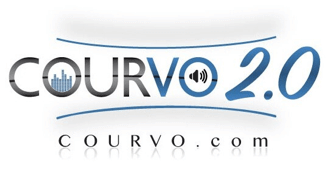
Here’s one way to save money on costly re-do’s when sending the final version of an eLearning course to your narrators: anticipate the questions someone brand-new to the copy will have.
That means:
- Never Ever EVER assume your voice talent will know how to pronounce acronyms you take for granted. That may be your client’s shop-talk, but we’ve never seen it before. Should “TRAC” be read as “track” or T-R-A-C?
. - Be exact in how you want years spoken. No one says years the same way…especially any year from the previous decade. Tell your narrators specifically whether you want 2016 to be “Twenty Sixteen”, or “Two-thousand Sixteen”? 2006. “Two thousand six”, or “Twenty aught six”, or “Twenty -oh- six”?
. - Slashes are deadly. Be very clear how you want them spoken. It looks succinct in text, but the narrator never knows how to SPEAK a slash. Consider the following example: “As the company representative, you will be responsible for setting the incentives/programs that fall under your department.” Do you expect that to be read:
a) incentives slash programs
b) incentives (pause) programs
c) incentives or programs
d) incentives and programs
e) incentives and or programs
. - Most technical and medical terms need pronouncers. Even doctors disagree on how they should be said. Perfect example: cerebral palsy, diabetes, comparable, data.
. - Set rules for how to speak common abbreviations. Should “e.g.” be said as “for example”, or “as an example”? What about “i.e.”? Do you want “that is” or “in other words”?
. - Better to write out EVERYTHING. Instead of the text reading “solution(s)”…go ahead and type out “solution or solutions”. That helps the talent know you don’t mean “solution and solutions” (kinda like the slash).
. - Be exact in instructions for how to pronounce numbers that go into the hundreds or thousands. In some parts of the country, “246” is spoken as “two-hundred forty six”, but others might say “two hundred and forty six”.
. - Contractions are a preferable and conversational way of speaking with phrases like “we will”, “do not”, “it is” etc. “We’ll”, “don’t”, and “it’s” are more comfortable. This is where the narrator needs to know whether the client wants a comfortable breezy read, or something more rigid. For instance, many times, your audience will be people who speak English as a second language, and may need the more formal enunciation.
. - When the copy has extra spacing, does that mean you want a pause? If so, how long a pause?
. - BOLD type will prompt a narrator to give emphasis to that word 99.99% of the time. As the designer of a course, you may be using bold words to indicate a change in graphic, transition reveal, or new slide, but talent will always give it more shine.
Many narrators struggle with whether to change obvious subject/verb disagreement (many of us are OCD grammarians) when they come across them in the script. Our dilemma is one of wanting to follow the copy to the letter, versus doing what common sense (and good grammar) demands. Misspellings? Same thing. It can change the meaning of a sentence (their, there, they’re). Sometimes we’re darned if we do, and we’re darned if we don’t. We’d rather do it right than have you send it back, costing you more money and pushing your deadline.
When I narrated my own book, I found numerous mistakes. NOTHING points up errors in copy more than having to read it out loud. Actually, that might not be a bad thing for YOU — as the author of an eLearning course — to do on your last proofread. Read it out loud.
We’re your partner in these projects, and we want you to come back with more work for us when you’re happy. You’re happy when we get it right. We get it right when you give us impeccable directions.
CourVO


Yes to all of this! I’ve run across each problem – I’ve even used an online medical dictionary that has audio pronunciation and I was still told I was saying it wrong!
I LOVE this! Thank you for articulating what so many of us think. Planning to share it, BIG TIME.
Brilliant, Dave!!! Thanks for penning this.
I might add that when writing out a word phonetically for pronunciation purposes, CAPS always mean an accent or emphasis. For example: RAIL-road or an-TISS-sip-ate.
Brilliant, Dave! Thanks for penning this!
I might point add that another issue is that when providing the phonetic pronunciation, the accented syllable should be capitalized. For example: a-TISS-sip-pate.
Point add??? What is that? Meant “point out.”
Well said , Dave! Your advice will save time and money for all of us. Thanks for this today!